Apparently he had "a wonderful memory, and his racy description of events eighty years ago give rise to great merriment". His recipe for a long life was given as "work hard, be temperate, and be a lover of sport". The name of "Jumpin' Jimmy O' Leven" was a household name all over the lowlands back in the 1850s and 1860s (I guess few had heard of Lundie Mill back then). The article continued...
"Mr Methven was a famous athlete and was never beaten until he retired, by any athlete of his age and weight. From the early age of seventeen he appeared at all the sports, and was always champion jumper. As a hammer and ball thrower he was seldom beaten, and he never failed to secure a place at vaulting. Hurdle races however were his favourites, and to use his own expression, "I cud loup ower the hurdles as guid as ony horse". James prides himself on always "knockin' spots oot o' a' the Duke o' Atholl's giants at sports". For twelve years Methven came up against Donald Dinnie at various sports but never once did Donald gain the mastery. Ned McNeil also competed at many tournaments, and he usually ran hard on Jimmy's heels."
Jimmy made annual visits to Leith, Dunbar, Galashiels and Liverpool. "And mind ye" he said "I had to tramp every inch o' the road". Methven reflected upon how the athletes of the time now had "trains, motors and cycles to convey them to tournaments whereas in the olden days "shank's naggy" was the only choice". What would he make of today's pampered professional sports people? How did he manage to walk to Liverpool and then compete successfully in the Highland Games there? How long would it have taken him to get there and what would he have had to carry with him? An advert for the 1859 Liverpool Highland Gathering is shown below.
Such events must have caused huge excitement in the towns where they took place - with thousands of visitors, work suspended for the day, bands playing, flags and banners flying, "shows" (such as menageries, shooting galleries, merry-go-rounds, conjurers) and all manner of tents and stalls. The Jedburgh Border Games of 1853 (another of Methven's regular venues) reported "retailers of berries, pies, tarts, gingerbread, nuts, &c...soda water, lemonade and ginger beer....corks loosed from the grasp of wire were flying in all the tents in all directions". Methven's name crops up in many, many newspaper articles from the period in many different locations (Leven, Colinsburgh, Alva, Cupar, Dunfermline, Kinross, Dundee, St Andrews, Wishaw, Newcastle, Dumfries, Hawick, Leslie...to name a few) including several years at Leith Gymnastic Games held on Leith Links. The clipping below shows him winning multiple "purses of money" for his efforts in 1855 at Leith.
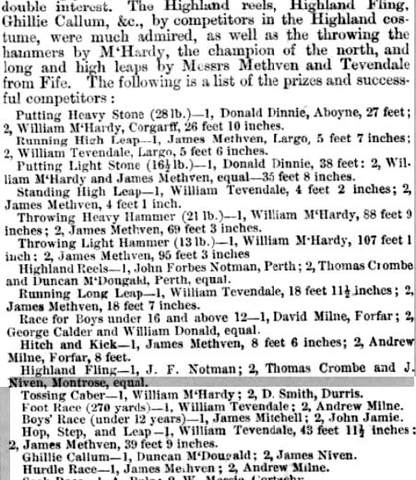
More on Dinnie here:
https://en.wikipedia.org/wiki/Donald_Dinnie
Methven must have 'retired' as an athlete around the time of his marriage, aged 38, to Euphemia Robertson Cockburn. They had four children that survived infancy - Andrew (who became a joiner, serving his apprenticeship with Peter Broomfield of Upper Largo), Euphemia, Jane and James (a stone mason).
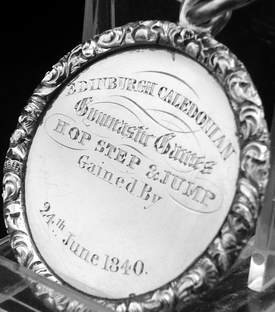
Going back to the St Andrews Citizen piece from 1922, we learn that James's four children were all thriving - with Andrew in South Africa, James in New Zealand and both daughters married - in London and East Lothian. The articles notes that Jimmy's father and grandfather both lived into their nineties.
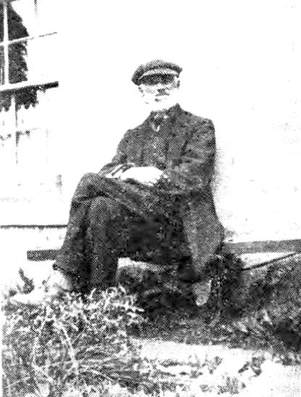
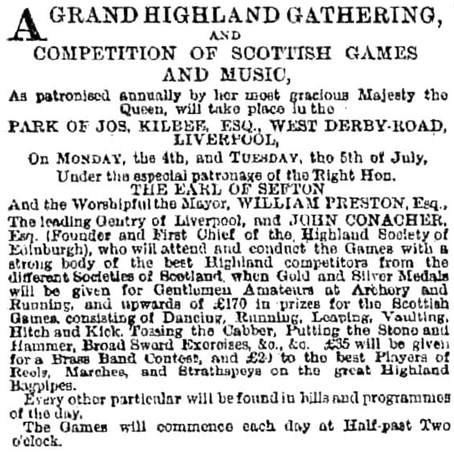
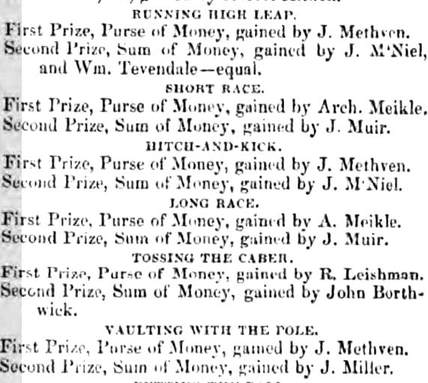
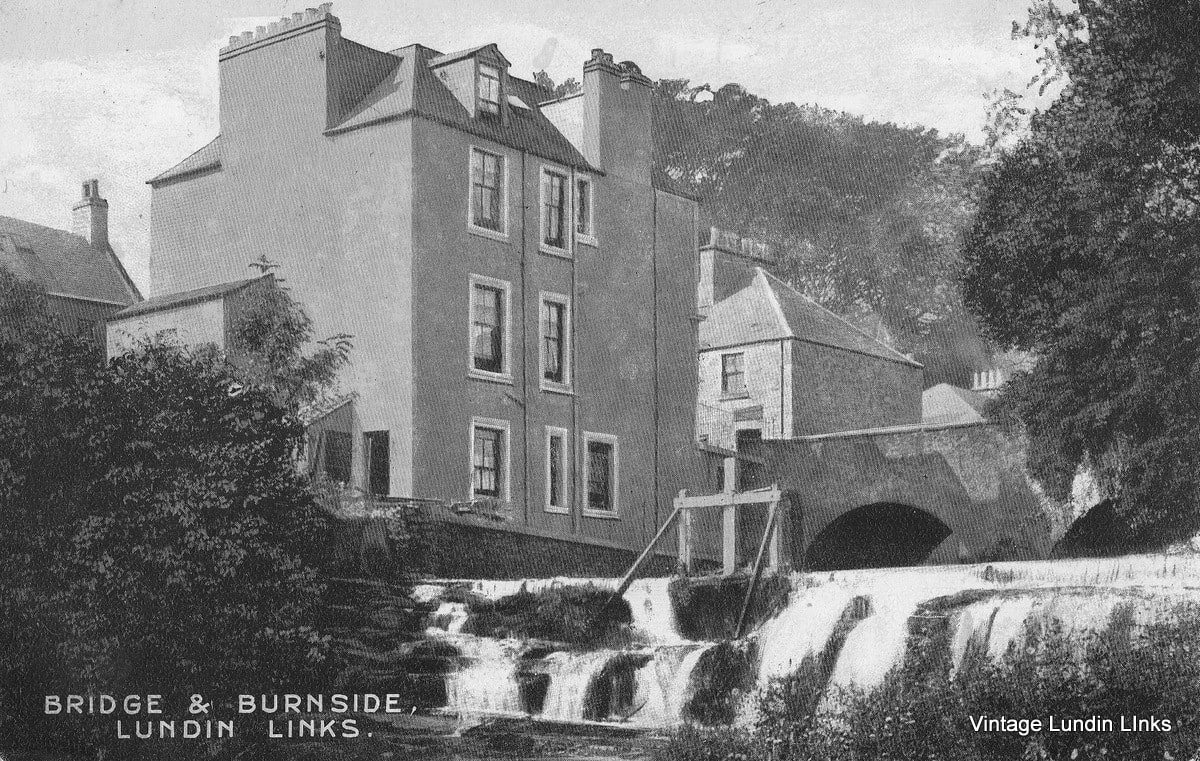


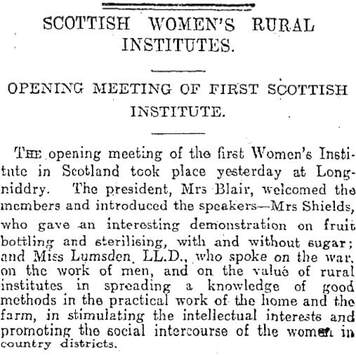
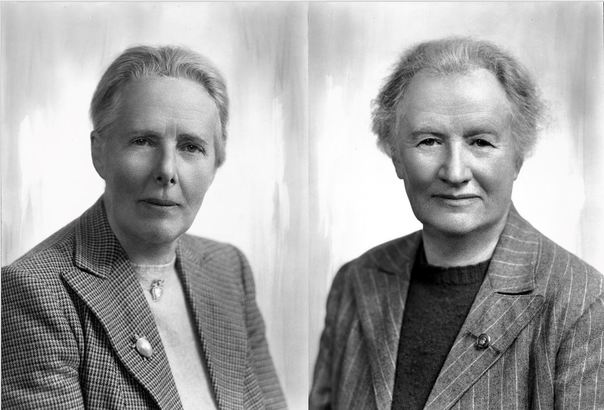


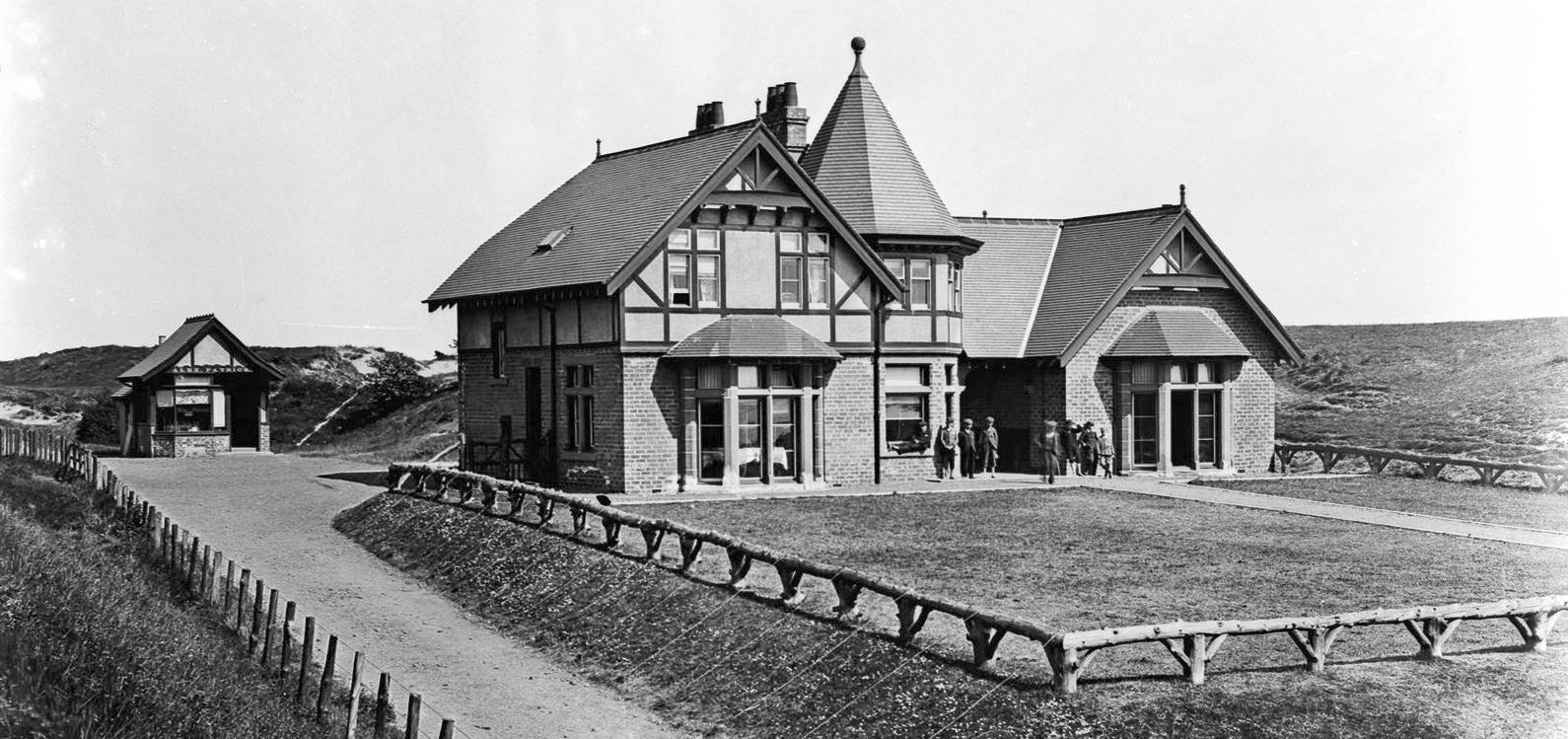
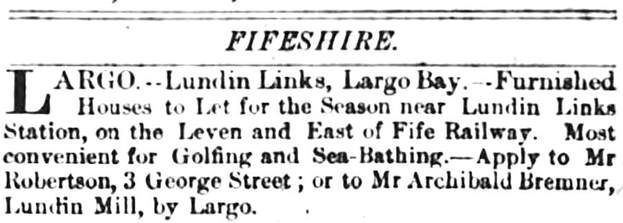
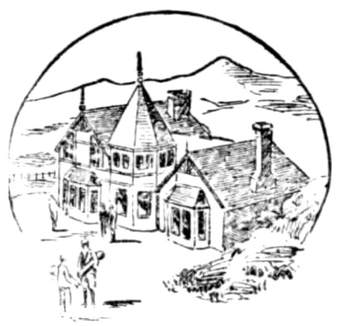
 RSS Feed
RSS Feed
